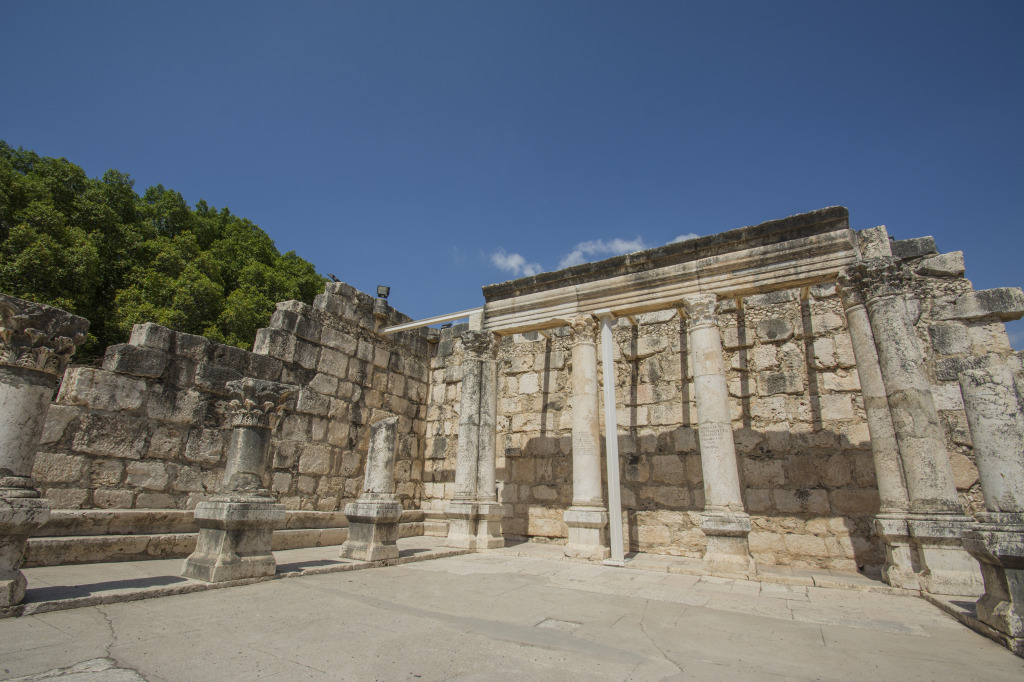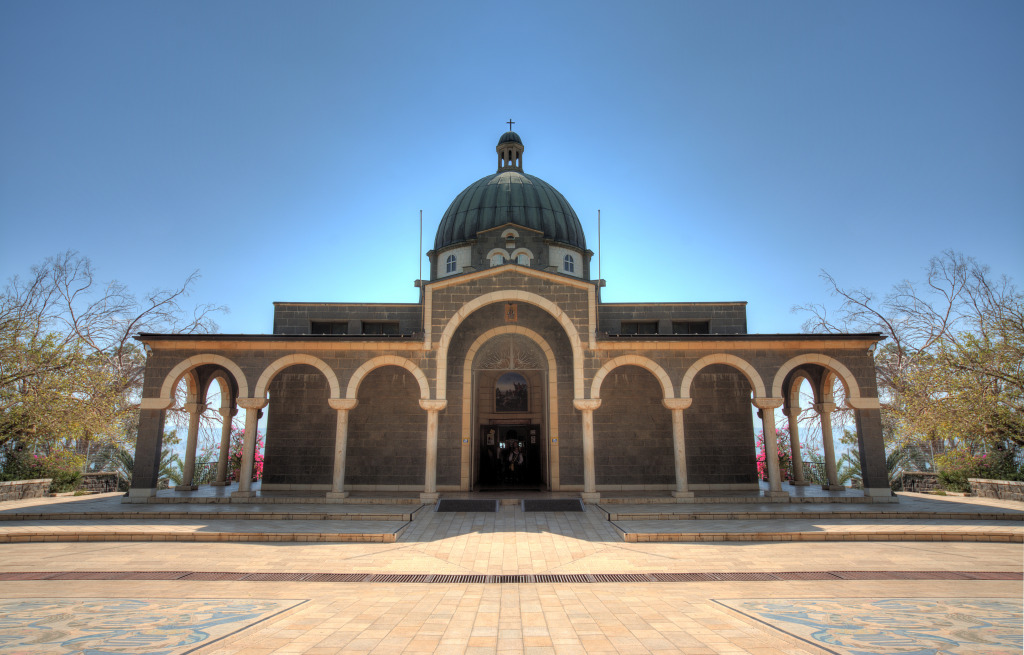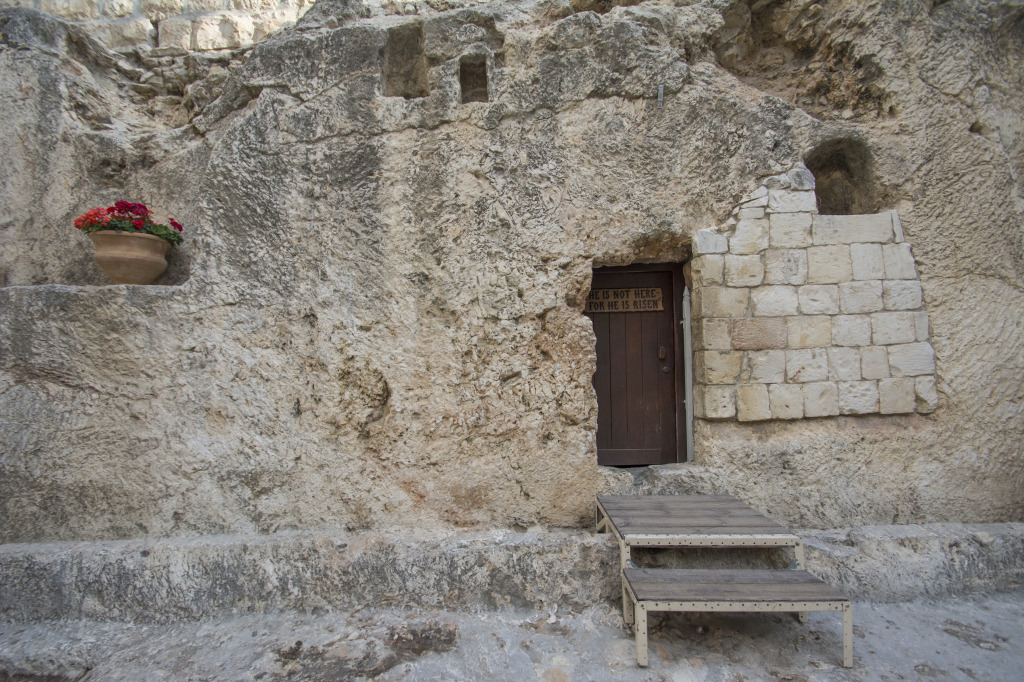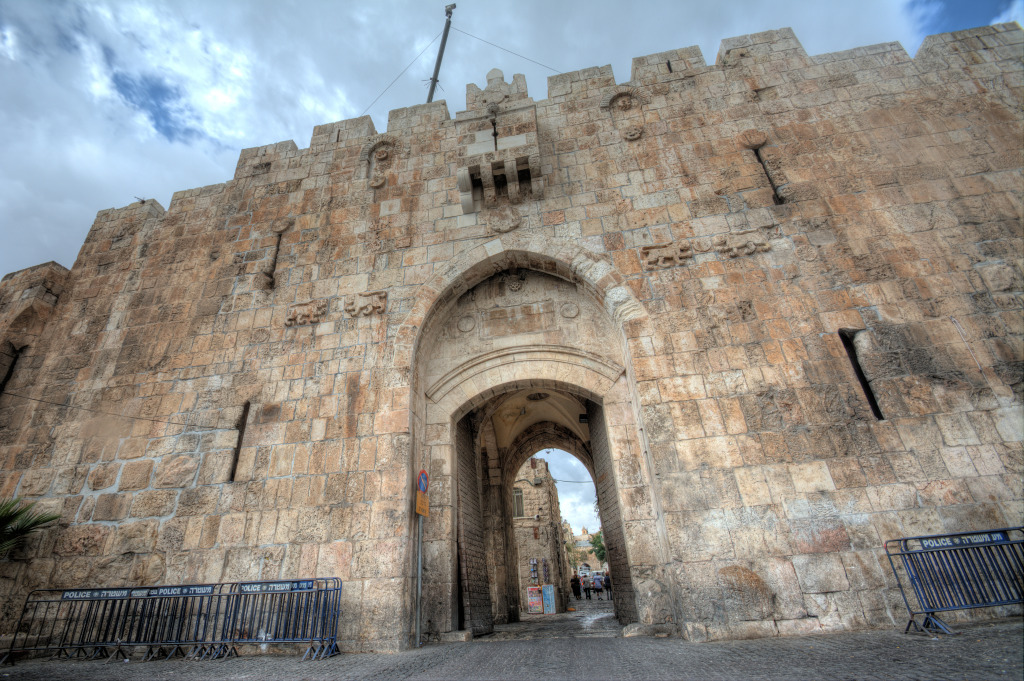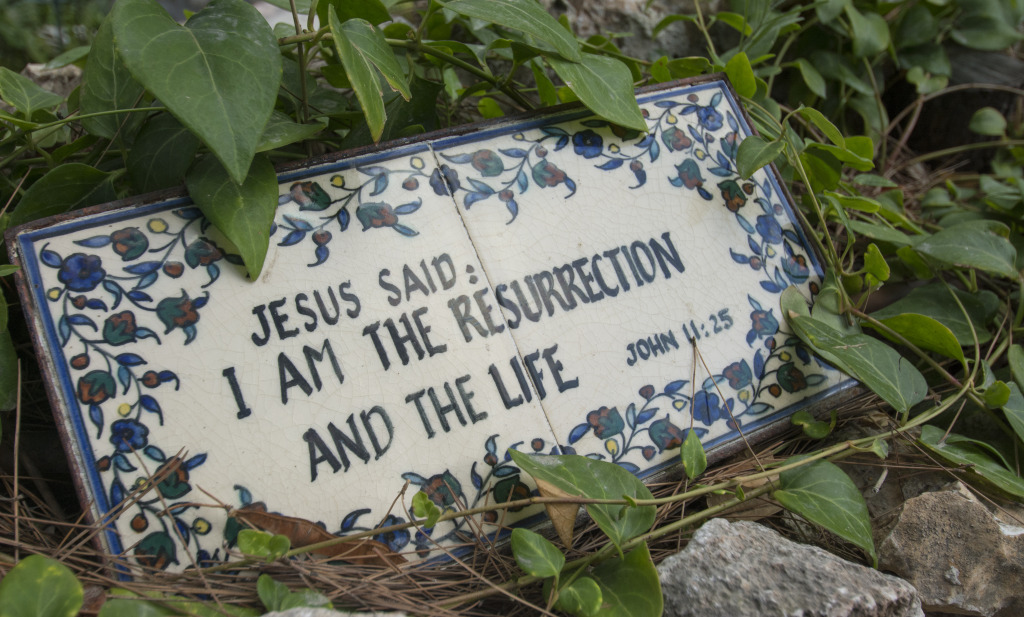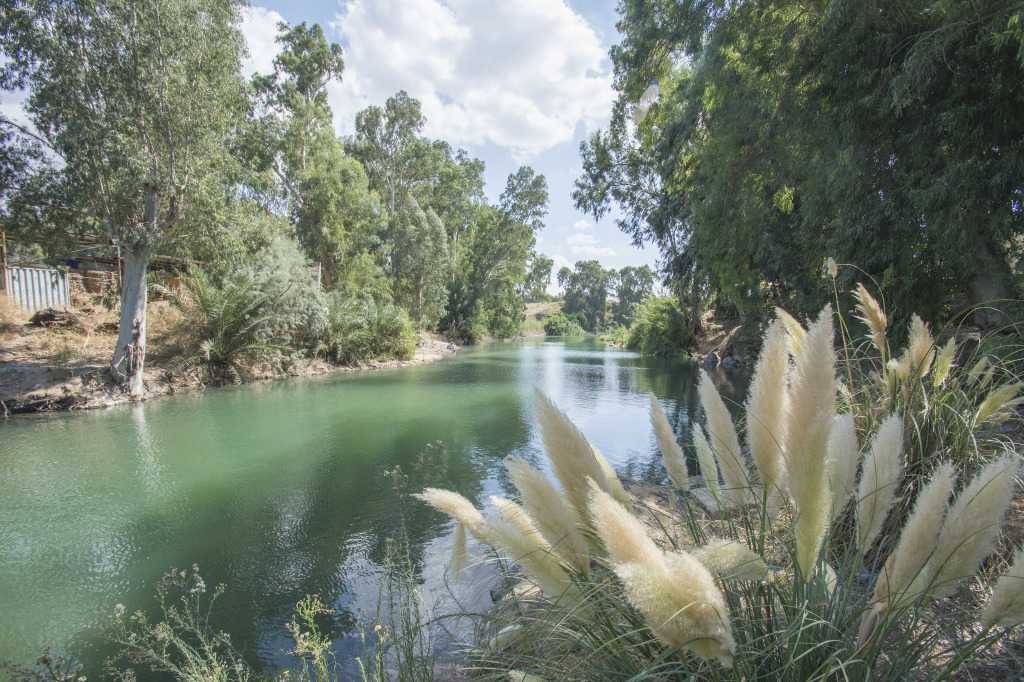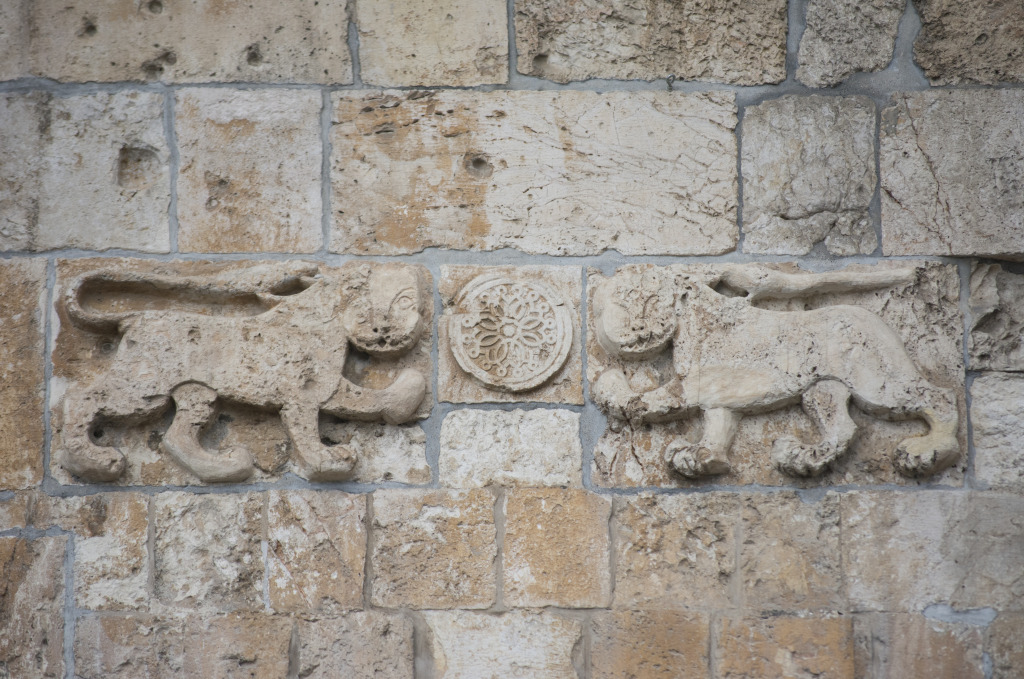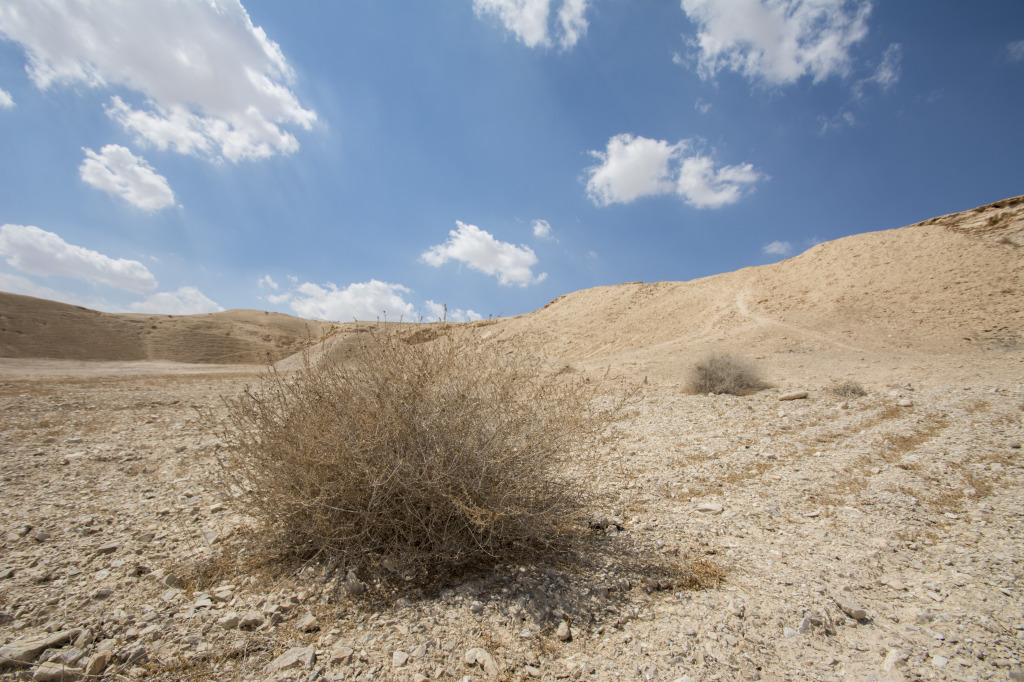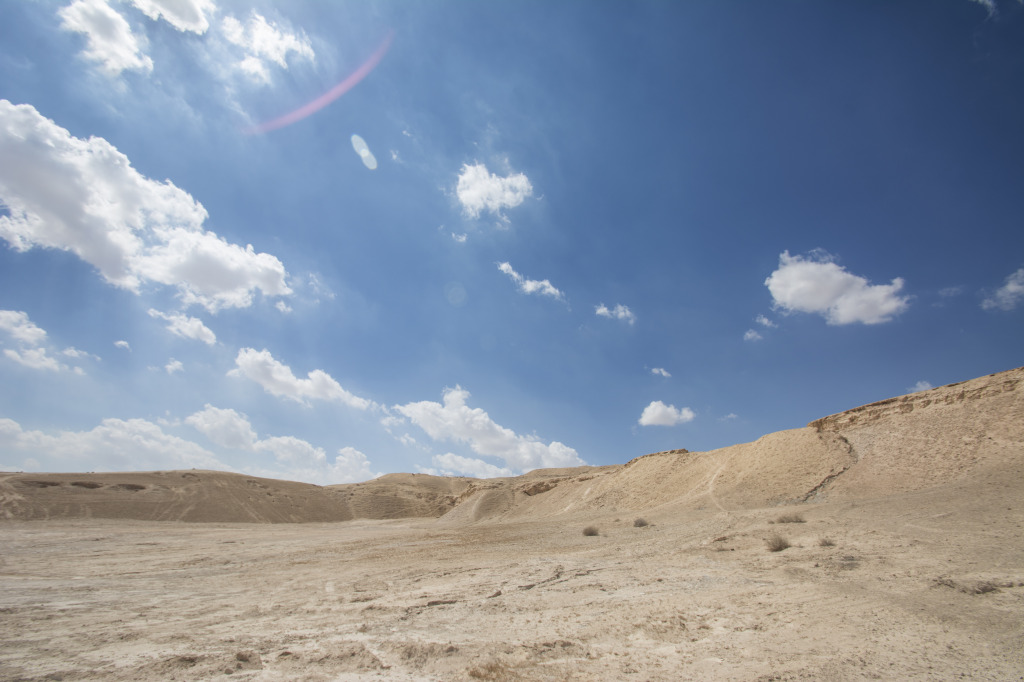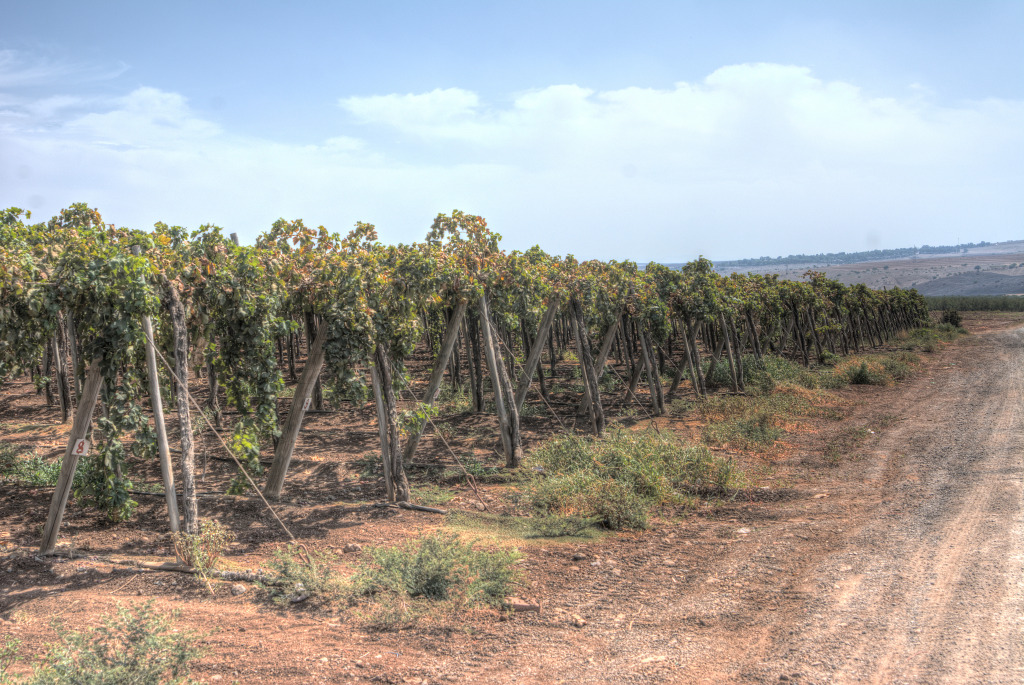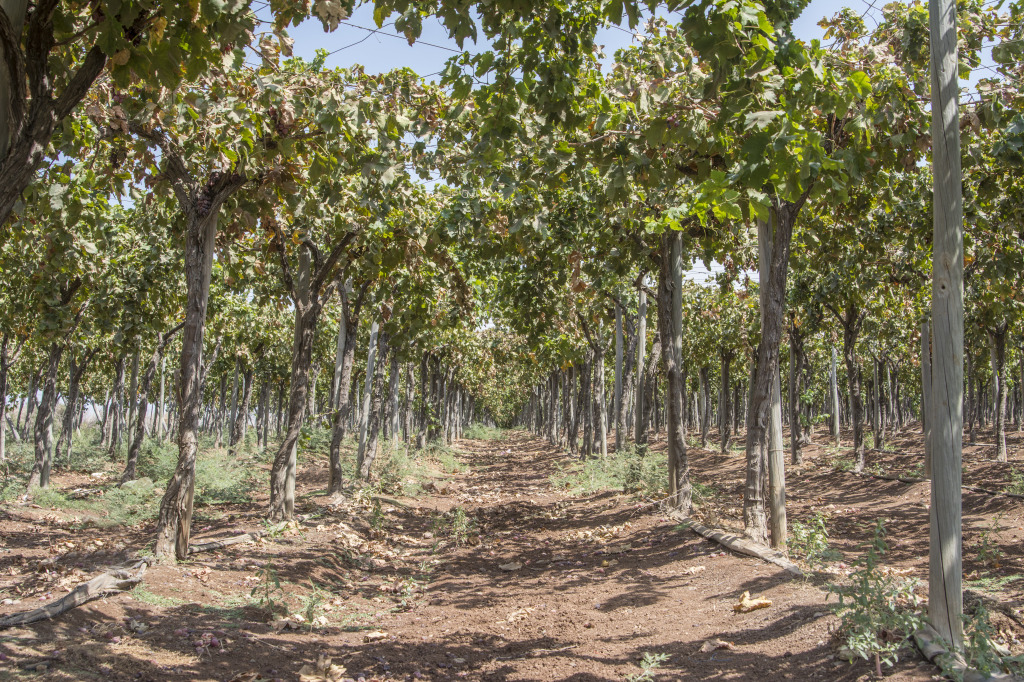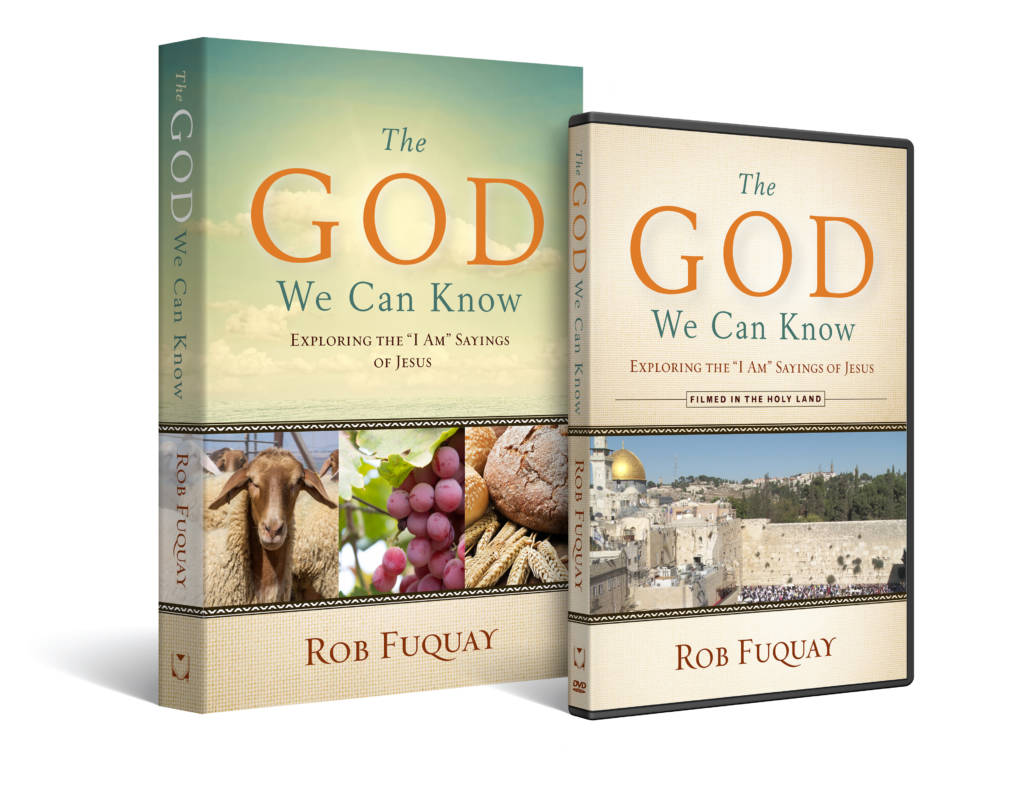Praise for The God We Can Know
“This is an outstanding resource for churches, small groups, and individual Christians to grow in their faith as Rob Fuquay explores the ‘I Am’ sayings of Jesus. Rob is an outstanding teacher and guide, and I look forward to studying this resource in my own small group!”
-Adam Hamilton, Pastor and author of The Way: Walking in the Footsteps of Jesus
About the Book
How long are the sessions in each of the series?
We created the age-level guides for 45-minute sessions and included additional material for midweek groups that meet for 60-90 minutes. You can tailor the content to fit your setting. The video sessions for this study are as follows:
- Introduction: “Knowing the Great I Am” —10:07
- Session 1: “I Am the Bread of Life” — 8:45
- Session 2: “I Am the Light of the World” 6:35
- Session 3: “I Am the Good Shepherd” — 8:03
- Session 4: “I Am the True Vine” — 8:24
- Session 5: “I Am the Way, the Truth, and the Life” — 8:56
- Session 6: “I Am the Resurrection and the Life” — 7:59
We’ve never offered small groups before. Is there more help online?
Everything you need is included in the Age-level group guides! For youth and adult leaders, we suggest you read the articles “Starting and Facilitating small groups.” If you’re still a little nervous, sign up for the online eCourse as a group through Upper Room eLearning. If you haven’t taken an eCourse we make it easy for you and your group to learn together!
What do you have for children?
You’ll notice on the CONTENT FOR LEADERS tab a drop-down for Age-level guides. On that page you’ll find the Children’s Group Guide, download the pdf for your children’s facilitators, it contains additional content for planning their sessions.
OK, so what about youth?
Glad you asked! The Youth Group Guide is also on the Age-level guides drop-down, along with the Adult Group Guide. You’ll also find two helpful articles on Starting and Facilitating small groups from our friends at devozine!
How do we prepare facilitators to lead this study?
Everything you need is included in the Age-level group guides posted under the CONTENT FOR LEADERS tab on this website. We suggest you spend some time going through the guide with your facilitators before your groups begin.
What if I Have More Questions?
Contact customer assistance 800.972.0433
The God We Can Know eCourse
This 7-week worship and study series will help us answer the most essential question in the Christian faith, “Who do you say I am?”
The “I Am” sayings of Jesus not only grab our imagination by revealing more about his purpose, they also shape our own Christian identity and connect us to the God of Moses, the Great I Am.
The DVD includes 7-sessions (8-10 minutes each), filmed in the Holy Land.
Significant—yet ordinary—images give us insightful ways to experience Jesus anew and to discover a God who is close and wants to be known through these weekly themes:
- I Am the Bread of Life – Knowing God’s Satisfaction (John 6:27-59)
- I Am the Light of the World – Knowing God’s Guidance (John 7:2, 14; 8:12)
- I Am the Good Shepherd – Knowing God’s Care (John 10:1-10)
- I Am the True Vine – Knowing God’s Power (John 15:1-8)
- I Am the Way, the Truth, and the Life – Knowing God’s Way (John 14:1-7)
- I Am the Resurrection and the Life – Knowing God’s Possibilities (John 11:17-26)
Praise for The God We Can Know
“I have been a fan of Rob’s for some time. He leads from the deep places of the Spirit of God!”
-Mike Slaughter, Senior Pastor at Ginghamsburg Church
Sermons
WEEK 1 — Knowing the Great “I Am”
Key text: Exodus 3:1-14
Opening
Consider introducing the series with the subject of the vastness of God.
Research and provide data on the universe, such as the size of our solar system and our galaxy, and then compare those figures to the total number of galaxies scientists believe there may be in the universe. It challenges the imagination!
Consider it another way. Talk about and provide data on how detailed and
intricate the universe is. What is the number of cells in the human body? How small is an atom? This is infinity.
Such thoughts help us consider the vastness of God, who is Creator of all. Yet, that vast, infinite God is also personal and desires to be personally known by us. This is why God came to us in the person of Jesus.
Such an introduction will provide a way to talk about why you are doing a series on the “I am” sayings of Jesus. This series will explore self-identifying claims Jesus used that help us to experience and to know God.
The first I am spoken by God in the Bible reveals God’s desire to be known.
Into the Word
Explore the Exodus story and the context of the name God gave to Moses.
Research cultic beliefs from that time about the power of names have. How was the name Yahweh treated? What other understandings of this name are
important? Relate those thoughts to modern relationships and to the importance of knowing someone’s name or someone’s calling us by name. (Perhaps you have a good story of someone very important calling you by name when you didn’t even realize this person knew you. Relate the importance of that experience.)
What messages are being communicated in Moses’ desire to know God’s name
and in God’s willingness to be known?
Now move to the New Testament. Give the meaning of Jesus’ name. How do the
images of the “I Am’s” express further understanding of Jesus’ name? Consider how the “I Am’s” were important spiritual symbols coming out of Jesus’ Jewish faith, yet how they also are earthy and experiential. What is the message there?
What does it say that these spiritual images were practical parts of everyday life at that time?
Making Application
If the symbols of the “I am” mean God can be experienced in the ordinary world, what does this mean for us? Sometimes we talk about experiencing God as an intentional decision—a choice we make—in that God won’t draw near unless we seek God. But what if it works the other way around? What if God is already a part of our world, and we are simply invited to see and experience God’s presence? How are the “I Am’s” an invitation to enter into the “is-ness” of God, the God already here, the God who is I am?
You might want to use Brother Lawrence’s Practicing the Presence of God as an illustration (an uneducated monk who simply practiced being aware of God in course of an ordinary life of working in a monastery kitchen).
Invite participants into a six-week journey of being open to God. The symbols of the “I am” sayings teach us not only about God, but also about us. We get more in touch with our longings and needs and what ultimately fills these. Close the message by inviting participants to do the exercise in the book (p. 23) and to finish their own “I am…” sentence. Then invite them to make a list of what they imagine God might say. The comparison of these two lists is a good place to begin this journey. This will also prepare the participants for their small-group gathering.
Litany
One: Just as God spoke to Moses, God wants to speak to us. Let us open our
hearts to God who wants to be known and who says,
All: “I Am Who I Am.”
One: When life pressures us to care more for things than for God, remember that Jesus said,
All: “I am the Bread of Life. Come to me and never be hungry.”
One: When we feel puzzled about which choices are right, we can ask for
guidance from the one who said,
All: “I am the Light of the World.”
One: When we feel vulnerable and lost, we can find comfort in knowing that we are continuously being sought by the one who said,
All: “I am the Good Shepherd. Come to me.”
One: When we feel powerless and weary, we can find power offered to us by the one who said,
All: “I am the True Vine. Abide in me.”
One: When we wonder who’s in and who’s out with God, we can find
reassurance in the grace embodied in Jesus who welcomed all, saying,
All: “I am the Way. Follow me.”
One: When we face loss and pain, we can find hope in the one who promised us
renewed and abundant life, saying,
All: “I am the Resurrection and the Life. Live in me.”
Prayer
Dear God,
Help us to open our eyes,
our ears,
our minds, and
our spirits
to understand who you are
and to know you.
Be with us as we draw near to you
and closer to each other.
In your son’s holy name, we pray.
Amen.
Hymn and Song Suggestions
O God, Our Help in Ages Past
Great Is Thy Faithfulness
Just as I Am, Without One Plea
How Majestic Is Your Name (TFWS The Faith We Sing 2023)
Be Still and Know I am God (TFWS 2057)
Lord I Lift Your Name on High (TFWS 2088)
Take, O Take Me As I Am (Worship & Song 319)
Here I Am to Worship by Tim Hughes
10,000 Reasons by Jonas Myrin and Matt Redman
Blessed Be Your Name by Matt and Beth Redman
How Great Is Our God by Chris Tomlin, Jesse Reeves, and Ed Cash
Scripture Text
Exodus 3: 1-14
WEEK 2 – “I Am the Bread of Life” – Knowing God’s Satisfaction
Key text: John 6:27-59
Opening
Begin the message considering how hard it is to stay satisfied in our world.
Collect information on products that were advertised as “never needs replacing” or “guaranteed to satisfy.” How many of those same products later were made with upgrades or in “new and improved” versions?
Or look at some of the many advertisements aimed at making us dissatisfied. For example, “Are you tired of that old, worn out [fill in the blank]?” Consider putting together a short video of commercials or print advertisements that use phrases such as this.
Then explore the implications of such messages. What do they do to our sense
of satisfaction? Research articles dealing with the impact of a disposable society on our self-image. What does the constant message of “something better is out there” do to our relationships, our feelings about our careers, enjoyment of our possessions? This will provide a great lead-in to this week’s theme.
Into the Word
“I am the bread of life” is Jesus’ response to a miracle-chasing crowd. Explain the context of that remark. Consider what impact it would have had upon the people’s faith if Jesus had just given them what they wanted. What could be the possible downsides of that? (A good example is the movie Bruce Almighty and what happens when the character played by Jim Carrey, who has been given God’s powers, ends up answering everyone’s prayer with a “yes.”)
Jesus comes into a world prone to making us chase after endless wants, and he offers to be a source of satisfaction.
Making Application
What does this focus upon eating and being fed say about the power of hunger? How powerful a force is hunger? Can you think of other hungers that can become so great they make people do things they otherwise never would have considered?)
How can we experience Jesus as a source of satisfaction? How do we keep from
being consumed by our appetites? This is a good time to teach about fasting.
Research quotes about fasting from various saints: the desert fathers, other
ancient / modern mystics, Luther, Wesley, and more-recent theologians. What
are varieties of fasting that people might be invited to practice during Lent that will build authority over our appetites and urges? Perhaps list several, such as those mentioned in the book; you may know of others. Give some instruction on how participants might follow this for the remainder of Lent. (p. 32)
Call to Worship
One: Come, let us worship Jesus, the Bread of Life!
All: Christ has come from heaven to feed us with divine vitality.
One: We worship the One who offers the world everlasting life.
All: Bread of heaven, feed us till we want no more.
Litany
One: When we feel hungry for more of something—even when we’re not sure
what that something is, we can remember that Jesus said,
All: “I am the Bread of Life. Come to me and never be hungry.”
One: When we feel distracted by other means of fulfillment in the world, help us
to remember that Jesus said,
All: “I am the Bread of Life. Come to me and never be hungry.”
One: When we find ourselves feeling inadequate or incomplete in our daily lives,
remind us that we fill ourselves up on Jesus’ sustaining words,
All: “I am the Bread of Life. Come to me and never be hungry.”
One: When we look around at friends and strangers, assessing how we measure
up to others, help us to remember that we are enough and are satisfied by God’s
grace when we hear Jesus say,
All: “I am the Bread of Life. Come to me and never be hungry.”
One: When we worry that the satisfaction we have now may one day run out, let
us rest in the truth and fullness of Jesus’ promise,
All: “I am the Bread of Life. Come to me and never be hungry.” Amen.
The Lord’s Prayer
Our Father who art in heaven,
hallowed be your name,
your kingdom come,
your will be done,
on earth as it is in heaven.
Give us today our daily bread.
And forgive us our debts,
as we also have forgiven our debtors.
And lead us not into temptation,
but deliver us from the evil.
For thine is the kingdom, and the power, and the glory forever. Amen.
Prayer
Dear God, help us to remember that even when we feel like we don’t do enough
to honor you, you accept us just as we are because you made us and love us.
Let us be constant reminders to each other that we are enough. We invite you to
join us in this place, making your presence evident in our community. In the
name of Jesus we pray. Amen.
Benediction
Benediction
May the love of God
and the peace of Christ be with you.
You are filled with the bread of Life,
go and share the abundance of Christ with a hungry world
Hymn and Song Suggestions
My Hope Is Built
Love Divine, All Loves Excelling
All Who Hunger (TFWS The Faith We Sing 2126)
Christ Is Enough by Rueben Morgan and Jonas Myrin
Bread of Life by David Glenn
Songs for Communion
Let Us Break Bread Together
Fill My Cup, Lord
One Bread, One Body
Eat This Bread
Breathe by Michael W. Smith
Scripture Text
John 6: 25-35
WEEK 3 – “I Am the Light of the World.” – Knowing God’s Guidance
Key text: John 7:2, 14; 8:12
Opening
Begin this message by reflecting upon ways our society has evolved when it
comes to geographical guidance aids. Remember when we had foldout maps
that could stretch across the width of a car interior? Then we had moremanageable, comprehensive atlas books, but they had to be repurchased every few years to keep up with new roads. Finally, with the Internet, things really improved—we could use sites such as mapquest.com. Then came GPS devices.
Now we don’t even need to buy separate devices; everything we need comes on
our phones! (There’s obviously a fun jab at men just waiting to be taken here, thinking about how these technological advances helped those who don’t like asking others for directions. In fact, Google “Who discovered GPS?” and you’ll find three men!)
You could then make a turn recognizing another popular acronym for GPS—
God’s Positioning System. God’s desire to give direction to us is central in Jesus’ words, “I am the light of the world.”
Into the Word
This week’s sermon presents a great opportunity to experience the context of
today’s saying beyond what the book and DVD provide, as well as to build
anticipation for the small-group gathering. Teach about the setting of this “I am” saying—the Feast of Tabernacles or Feast of Booths. The Hebrew word for booth is sukkot (plural) or sukkah (singular). Have a replica of a sukkah built on the chancel as a visual illustration. (This is a great project for a Scout troop if you have one affiliated with your church.) If the sukkah you’ve built is big enough, you might preach this part of the message sitting under it. Invite participants to consider why this is an important remembrance in the Jewish faith. How is life like a pilgrimage? What lessons did ancient Israel’s experience in the wilderness
provide for future generations? Also, point out that this is one of the biggest celebrations of the year in modern Israel, and that small groups this week will get to see a present-day festival in Jerusalem.
Then point out the other context — the Sanhedrin meeting (in violation of their own code) in the Hall of Hewn Stones. If you have visual capability in your sanctuary, you could search for images to display on the screen showing what this place looked like, and the proximity of that gathering to where Jesus might have been standing in the courtyard of the Temple. Consider highlighting the teaching about the “Grand Illumination” that was part of this festival. What is the meaning of Jesus’ words “I am the light of the world” in this context?
Making Application
We all need guidance; sometimes we realize this, and sometimes we don’t. In
the context of the Old Testament sukkot festival, this was a reminder of how we need to seek God’s direction. What is the power of a person who recognizes this? Who are people you have known, or from history, who were better leaders or public servants because they realized their need for God’s direction? (Think of Martin Luther King collapsing in prayer at his kitchen table during a turbulent time in his life.)
At the same time, what does it look like when, like the Sanhedrin, we refuse to recognize our need for God’s guidance? How can failure to seek God’s wisdom blind us to the truth, especially when we think we have the truth? Religious persons can be the worst offenders. Look up instances in the Bible where it mentions people marching ahead with their plans but not seeking or consulting the Lord.
What does it mean to seek God’s guidance willingly? What does it mean to be
open to God’s direction when we don’t think we need to change direction?
Prayer
Loving God, we come together today, rejoicing and dancing in the light that you shine on us, allowing us to see you, know you, and find our way to you through your son Jesus. We know that you are with us in this place. Help us open our eyes to see you, our ears to hear your Word, and our hearts to know your love. In the name of Jesus we pray. Amen.
Litany
One: When we look around us and feel that only darkness and emptiness
surround us, illuminate our hearts with Jesus’ words,
All: “I am the Light of the World.”
One: When we look for God in the places of pain and suffering, pleading for that
holy presence to be made evident even in the gloomiest of places, help us to see
God at work through Jesus’ promise,
All: “I am the Light of the World.”
One: When we feel far away from God, even when we try to create that distance
ourselves, remind us that the love of God is always touching us through Jesus’
words,
All: “I am the Light of the World.”
One: When we can’t figure out where to go next, what to do, or who to be, help
us to hear God’s call and see the path illuminated for us by the one who says,
All: “I am the Light of the World.”
One: When we wonder how we will go out into the world and shine God’s light,
sharing God’s love with all the earth, let us follow Jesus’ lead as he reveals
himself to us, saying,
All: “I am the Light of the World.” Amen.
Prayer
Loving God, Creator of Light. We thank you for coming to us in Jesus Christ, showing us who you are and who we are created to be in you. Light the dark corners of our minds. Warm the cold places in our hearts. Fill the empty chambers of our spirits. Heal the brokenness in our lives. Amen.
Hymn and Song Suggestions
I Want to Walk as a Child of the Light
Be Thou My Vision
This Little Light of Mine
Come, We That Love the Lord
Guide My Feet (TFWS The Faith We Sing 2208)
We Are Marching (TFWS 2235-b)
As Pilgrims on Our Way (Upper Room Worshipbook 210)
Praise the One Who Breaks the Darkness (Upper Room Worshipbook 90)
Open the Eyes of My Heart by Paul Baloche
Amazing Grace (My Chains are Gone) by John Newton, Chris Tomlin, and Louie
Giglio
Songs for Communion
Let Us Break Bread Together
Fill My Cup, Lord
One Bread, One Body
Eat This Bread
Breathe by Michael W. Smith
Scripture Text
John 8:12
WEEK 4 – “I am the Good Shepherd.” – Knowing God’s Care
Key text: John 10:1-15
Opening
Once again, this is a message that lends itself to being experiential for the
congregation. If you begin by launching into the shepherding images, consider
having a typical sheep pen built that would look like a rock wall with an opening.
Or once again, use images that could be shown on a screen. If you have a sheep
pen built, foam rocks work well and are not very expensive. By standing in the
entrance of the pen as you preach, you will provide a great way for people to
understand the “going out and coming in” verses in the Old Testament.
And/or, begin with a focus on our modern craving for security and excitement.
You could have fun asking the congregation to think about how much we are
creatures of habit. Ask, “How many of you sit in or near the same place during
the worship service each week? Why do we do that?” You could also research
how much we spend today on security, such as home-alarm systems. Providing
security has become big business.
At the same time, how much do we invest in recreation and vacations? We need
breaks in our routines, as well as activities that bring energy. We are always in
movement through that portal—going out and coming in.
Into the Word
Make reference to the context of last week’s saying, and how this marks the beginning of a mounting tension between Jesus and the religious leaders. That tension leads up to Jesus’ words, “I am the good shepherd.” Jesus debated with religious leaders about what it means to be descendants of Abraham. In fact, this was the context of another “I am” saying: “Before Abraham was, I am” (John 8:58).
This leads into the story of Jesus’ healing the man born blind and the interrogation by the Pharisees. It ends with Jesus accusing the Pharisees of spiritual blindness.
Immediately after that, Jesus compares himself to a good shepherd, in contrast to thieves. This is important framing. Jesus is both a door / gate for the sheep and the good shepherd, because he lays himself down for the sheep. Jesus pits himself against many in religious leadership who profess a care for the people but who do not have the investment they claim to have.
Making Application
How does this apply to our lives? Is there a message here for the modern
church? There is much emphasis today on growth and numbers, but do we at
times lose sight of the individual worth of people because of the drive to be
successful? Or perhaps look at the sports world and the attention a team or an
owner gives a player until that player’s performance is no longer up to
expectations.
Make it even more personal: Have we experienced from an employer, a friend, or
someone else we trusted an expressed concern for our well-being, only to find
out this concern was based solely upon what we could do for that person?
The important point to make here is that none of us loves totally free of impure
motives. We too can be guilty of the same—helping someone because of what
he or she can do for us; showing special treatment toward others because of the
way in which they make us feel important. Jesus’ saying “I am the good
shepherd” is radical because he doesn’t seek to get anything out of the sheep—
he simply lays down his life for them. This is the basis of our value and worth—
understanding and accepting the sacrifice God is willing to make on our behalf.
Our importance is based either upon what we do or upon what God has done for
us.
The conversion story of Liz Curtis Higgs is applicable. Living a very wild life, she
accepted an invitation to attend church with a friend. The pastor talked about
men laying down their lives for their wives. Higgs said to her friend, “If I met a
man willing to die for me, I’d marry him in a heartbeat.” Her friend said to her,
“Liz, a man has already died for you.” Somehow the idea that God loved her that
much despite her life and deeds broke through.
Worship Helps
Litany
One: When we look around us and feel that only darkness and emptiness
surround us, illuminate our hearts with Jesus’ words,
All: “I am the Light of the World.”
One: When we look for God in the places of pain and suffering, pleading for that
holy presence to be made evident even in the gloomiest of places, help us to see
God at work through Jesus’ promise,
All: “I am the Light of the World.”
One: When we feel far away from God, even when we try to create that distance
ourselves, remind us that the love of God is always touching us through Jesus’
words,
All: “I am the Light of the World.”
One: When we can’t figure out where to go next, what to do, or who to be, help
us to hear God’s call and see the path illuminated for us by the one who says,
All: “I am the Light of the World.”
One: When we wonder how we will go out into the world and shine God’s light,
sharing God’s love with all the earth, let us follow Jesus’ lead as he reveals
himself to us, saying,
All: “I am the Light of the World.” Amen.
Prayer
Holy God, we come to you today in gratitude for your love and care. We can become so busy and consumed with stress and deadlines that we need a reminder of who we are, whose we are, and why we are here. Thank you for loving us through all of it. We need your guidance and care to do the work you call us to do and to be the people you call us to be. Help us, Lord, as we seek to do your will as your beloved children. Amen.
Prayer
Saint Patrick’s Breastplate
Christ be with us, Christ before us, Christ behind us,
Christ in us, Christ beneath us, Christ above us,
Christ on our right, Christ on our left
Christ where we lie, Christ where we sit, Christ where we arise,
Christ in every heart of everyone who thinks of us,
Christ in every eye that sees us.
Christ in every ear that hears us.
Salvation is of the Lord,
Salvation is of the Christ,
May your salvation, O Lord, be ever with us. Amen
Hymn and Song Suggestions
Savior, Like a Shepherd Lead Us
Spirit Song
He Leadth Me
The King of Love My Shepherd Is
In Christ Alone by Keith Getty and Stuart Townsend
Scripture Text
John 10:1-15
WEEK 5 – “I am the true vine.” – Knowing God’s Power
Key text: John 15:1-8
Opening
A friend rode with a farmer upon his horse-drawn wagon. There were blinders on the horse, and as they rode along, the friend noticed the farmer frequently saying, “Now, keep pulling, Cinnamon… That’s the way, Gertrude… A little harder, Dakota…” Finally, the friend asked, “Why do you keep calling all these different names when there’s just one horse?” The farmer replied, “So my horse will think there are others pulling too. If he thinks he’s alone, he’ll quit!”
You may think of other stories that relate to the feeling that It’s easy to give up when we think we’re running alone.
Into the Word
That sets up this week’s saying. Jesus was preparing the disciples for his
departure. Offer some background on how this saying and next week’s saying
come in what is known as the Farewell Discourse in John. These chapters (14–
17) are about preparation for the disciples after Jesus’ death. Jesus knows that
the disciples will feel alone and that it will be easy for them to give up.
Obviously the central image for staying connected to Christ as our source of
spiritual power is the vine. Make reference to the book or do your own research
on the vine as an important symbol in Israel’s faith. Do a word study on abide,
and consider how this keeps us connected. Jesus talks about “cutting away” as
the key to abiding—a seemingly contradictory idea. How can this be? How is
removing something a way to stay strong and healthy?
Making Application
The book deals with the two-fold aspect of cutting away: pruning growth and
removing dead branches. Are there agricultural examples in your area that fit
well, such as apple trees? Vineyards? Other citrus produce?
What does this look like in our personal lives? In other words, what are some
ways in which we sometimes need to prune or cut away? In making spiritual
application, ask, “Why this is hard? What makes us resist cutting away too much
activity or finally letting go of something that has no promise of producing? How
much of our self-identity or feelings of importance get in the way? How much
does insecurity play a part?” At the root of all of this is our trust in God to give us what we need.
Consider using a sample vine during the message. Close by illustrating what it
means for us to be the branches, as Jesus said, and letting him be the vine. On
one end is the fruit—whatever it is that makes us feel productive or successful or
secure. On the other is the vine—our source of life. Which way do we look for
strength?
Worship Helps
Litany
One: When we feel isolated, we can remember that Jesus said,
All: “I am the True Vine; abide in me.”
One: When we feel powerless, we can find strength in remembering that Jesus
said,
All: “I am the True Vine; abide in me.”
One: When we are tempted to try to go it alone, we can reach out to other
believers, remembering that Jesus said,
All: “I am the True Vine; abide in me.”
One: When life becomes so busy that time with God seems impossible to find,
we can regain our focus by remembering that Jesus said,
All: “I am the True Vine; abide in me.”
One: When we stress about the quality of the fruit we are or are not producing,
we can relax and trust the source of our life and growth, the One who said,
All: “I am the True Vine; abide in me.” Amen.
Prayer
Dear God, thank you for bringing us all here together again. We have learned so
much about you through the words of your son, Jesus Christ, and we hunger for
a deeper sense of you and your love for us. Be with us as we continue on this
journey; help us to love one another and to use the gifts you gave us for the
building up of your kingdom. In your name we pray. Amen.
Hymn and Song Suggestions
Bless Be the Ties that Binds
One Bread, One Body
We are One in the Spirit (TFWS The Faith We Sing 2223)
O Blessed Spring (TFWS 2076)
Vine and Branches (Upper Room Worshipbook 107)
One Thing Remains by Brian Johnson, Christa Black Gifford, and Jeremy Riddle
Scripture Text
John 15:1-8
WEEK 6 – “I am the Way, the Truth, and the Life.”–Knowing God’s Way
Key text: John 14:1-7
Opening
Use a story from your own experience of needing assistance to find your way
and someone giving you complicated directions, as opposed to someone simply
saying, “Just follow me. I’ll take you there.” It’s always better when someone
shows us the way!
Examine how the Bible is a story of God’s bringing us back to the garden of
Eden—not the literal place, but the state of being where we had perfect
communion with God. The Bible is about God’s desire to direct us back. The Law
was meant to be a set of directions for us. Then prophets made it more personal,
but it was still like the clerk in the store just pointing us in the right direction.
Finally, God sent his son, who said, “Follow me.”
Jesus said, “I am the way, the truth and the life.” His life is the way to the Father.
Today’s message focuses on what this means.
Into the Word
This week’s chapter in the book deals with the controversy of Jesus’ words, “No
one comes to the Father except through me.” You may wish to avoid this
altogether in the sermon, or you may choose to prepare and set the stage for that
discussion. If you do the latter, regardless of your interpretation, be wary of
getting into the debate on Christianity versus other religions. The focus should be
upon how Jesus is the way.
Refer to last week’s message, in which you described the setting of Jesus
preparing his followers for his departure. Also, consider the setting in which this
Gospel was written: It was a time of great persecution against Christians who
were easily tempted to believe others questioning the validity of their faith. Both
settings put people in contexts of facing adversity.
This is also the same passage where Jesus talks about taking us to the
“mansions” prepared for us. Point out the book’s reference that mansion is the
noun form of the verb abide, from chapter 15. Jesus will take us there. This
passage is written with a very relational understanding. This has to be about
more than just something to believe.
Making Application
What’s the message for us? How does knowing about God versus really knowing
God make a difference in our lives, particularly in times of adversity? Are there
times when we need more than simply “right belief”? How important is a
relationship with a living Savior?
This is a good focus for the rest of the message: How do we make Jesus our
way? How can we know Christ in such a way that it gets us through our
challenges? What practices help us to know Christ in a real and vital way?
Worship Helps
Litany
One: When we face a complicated situation that challenges us to see what God
wants us to do, we can remember Jesus saying to his friends,
All: “I am the Way.”
One: When we find ourselves wondering if we’re really accepted by God, we can
take comfort in remembering the grace embodied in Jesus who said,
All: “I am the Way.”
One: When we are tempted to believe that we know who’s in and who’s out, we
can remember that Jesus welcomed outsiders and outcasts and said,
All: “I am the Way.”
One: When we fall into the trap of thinking that faith is about rules, we can
remember the call to relationship found in Jesus’ words,
All: “I am the Way.”
One: When we wake in the morning and wonder what God asks of us in that
day’s encounters, we can find our model and our answer in the one who said,
All: “I am the Way.”
Prayer
Dear God, thank you for working in our lives every day and allowing us to gather together to learn more about you through your son Jesus Christ. We thank you for the work you have already done in our lives and in the life of our church and we know you are not finished with us. Please be with us as we draw near to you and closer to each other. In your son’s holy name, we pray. Amen.
Hymn and Song Suggestions
The Summons (TFWS The Faith We Sing 2130)
I Have Decided to Follow Jesus (TFWS 2129)
Christ is the Truth, the Way (Upper Room Worshipbook 93)
Give Me Jesus (Upper Room Worshipbook 111)
Jesus Paid it All by Elvina Hall
Scripture Text
John 14:1-7
WEEK 7 – “I am the Way, the Truth, and the Life.”– Knowing God’s Way
Key text: John 14:1-7
Opening
Research everything you can find about Lazarus. Begin the message by helping
people to see things through his experience. You might tell it from a third-person
perspective: “Lazarus was just ___years old. He lived in a small village with his
sisters, probably never venturing more than a day’s walk from home. He became
ill one day. Unfortunately for him, he lived in a time and place where no medical
treatments were available. Worried loved ones could do nothing but watch him
rapidly decline…”
Lead up to the dramatic moment of Lazarus coming out of the tomb, squinting at
the light, wondering what had happened. And then he faced suspicious people
who wanted to put him to death for being the recipient of one of the greatest
miracles in history!
The turn you could make here is to point out that for all the drama surrounding
his life, Lazarus never speaks. We don’t have even a single quote from him in the
Bible. As significant a role as he played, he actually is not the main character of
the story. He is not even a supporting actor. The real emphasis is on his sisters—
those who have to face the death of someone they loved.
That’s what makes this story relevant for every one of us: If we live long enough,
we have to face the deaths of people we love. This story is about facing death.
Into the Word
This chapter in the book uses Barbara Brown Taylor’s distinction between belief and trust. Consider exploring what this looks like as a key to understanding Jesus’ words, “I am the resurrection and the life.” What is the difference to you?
Someone once described it this way: “I went to a new dentist. I saw the many diplomas from reputable universities hanging upon the wall and believed this doctor was competent. I watched as he treated people with compassion, and I believed he was caring. I saw an expensive foreign car in the parking lot with a license plate that said ‘Tooth Doc,’ and I believed he was successful. But when I got into the chair and he walked over to me with a pointed instrument in his hand and said, ‘Open up!’ I needed more than belief, and I had to trust!”
Making Application
Is it ever this way with faith? Can we believe all the right things about God but
find it hard to trust? Why is this the case? What does trusting require? Is it
possible to go through life believing but never really trusting God?
Make reference to the book’s distinction between resuscitation and resurrection. Point out the obvious tension in this story. It is clearly a story of resuscitation— Lazarus would one day die again. But the story is also about resurrection— trusting God to do more than what we see as possible. How we read the story makes all the difference. If we read this story as being about resuscitation, we will only trust God for our wants. If we read it as being about resurrection, we will trust God with our wants. What are some ways to illustrate or tease out that idea?
You might have a story from your own life or from the life of someone in your congregation who trusted God in a time of loss, the way Martha was invited to trust Jesus, and who came to discover God’s power to bring new joy for living. What were some of the difficult steps of trust that you or that person had to take in order to come to that new place?
You may want to close out the series by thinking about the words “I am.”
Emphasize that the phrase “I am” doesn’t mean the same as “I have been.” God
is no has-been. Perhaps today is an opportunity and a challenge for new trust
among people for whom God is a has-been. Perhaps they have felt let down by
God in the past. Perhaps God didn’t come through for them in a way they
wanted, but that doesn’t mean God isn’t coming through! (One good illustration
here is from the movie Forrest Gump, when Lieutenant Dan finally comes to a
place of new discovery in God’s goodness despite the trials he has been
through.)
Also, note that God doesn’t say, “I will be.” Maybe today is a good opportunity for
some to trust that we don’t have to be in a better position of faithfulness or living
before we can know God’s faithfulness. It is easy to believe that we have to get
things right before God will enter into our lives to give direction or offer care or
provide satisfaction and power.
Instead, God says “I am!” That means God is present now. This moment in our
lives is the best one for opening ourselves to the full presence of Christ and
inviting him into our lives.
Worship Helps
Litany
One: When we find ourselves wondering why loss has come, we can remember
Jesus’ words as he faced death:
All: “I am the Resurrection and the Life.”
One: When we are tempted to give in to the lie that life will never change for us,
Jesus says,
All: “I am the Resurrection and the Life.”
One: When life’s disappointments cause us to stumble, Jesus reminds us,
All: “I am the Resurrection and the Life.”
One: When we ask God to give us back something we’ve lost, Jesus reminds us
to look forward, saying,
All: “I am the Resurrection and the Life.”
One: God works on both sides of the grave, giving us life now and life yet to
come, through Christ who said,
All: “I am the Resurrection and the Life.” Amen.
Prayer
Dear God, thank you for working in our lives every day and allowing us to gather together to learn more about you through your son Jesus Christ. We thank you for the work you have already done in our lives and in the life of our church and we know you are not finished with us. Please be with us as we draw near to you and closer to each other. In your son’s holy name, we pray. Amen.
Litany
One: When we find ourselves wondering why loss has come, we can remember
Jesus’ words as he faced death:
All: “I am the Resurrection and the Life.”
One: When we are tempted to give in to the lie that life will never change for us,
Jesus says,
All: “I am the Resurrection and the Life.”
One: When life’s disappointments cause us to stumble, Jesus reminds us,
All: “I am the Resurrection and the Life.”
One: When we ask God to give us back something we’ve lost, Jesus reminds us
to look forward, saying,
All: “I am the Resurrection and the Life.”
One: God works on both sides of the grave, giving us life now and life yet to
come, through Christ who said,
All: “I am the Resurrection and the Life.” Amen.
Hymn and Song Suggestions
Tell Me the Stories of Jesus
Christ the Lord Is Risen Today
He Lives
Up from the Grave He Arose
Crown Him with Many Crowns
Because He Lives
Christ Is God’s Never Changing “Yes” (Upper Room Worshipbook 95)
Christ Is Risen by Matt Maher and Mia Fields
Mighty to Save by Ben Fielding and Reuben Morgan
How Great Is Our God by Chris Tomlin, Jesse Reeves, and Ed Cash
Scripture Text
John 11:17-26
Download the Sermon Starters (19 page PDF).
Age-Level Guides
 Youth Guide — this pdf is 44 total pages, download a copy to plan your youth study. The youth guide pdf also includes the articles below.
Youth Guide — this pdf is 44 total pages, download a copy to plan your youth study. The youth guide pdf also includes the articles below.
Starting Small Groups–if you are new to planning small groups, download this article written by Craig Mitchell a regular contributor to devozine.
Facilitating Small Group Sharing–another helpful article written by Craig Mitchell.
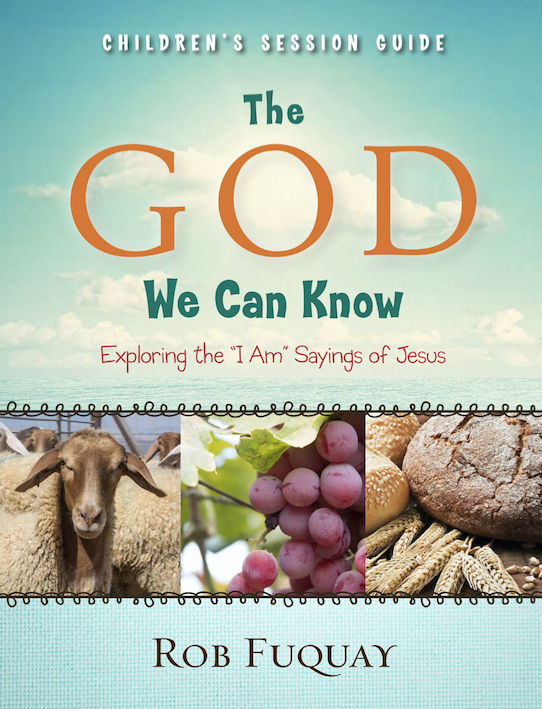 Children’s guide — The children’s sessions are designed for ages six through twelve. The DVD is not referenced in the Children’s Group Guide.
Children’s guide — The children’s sessions are designed for ages six through twelve. The DVD is not referenced in the Children’s Group Guide.
Children’s Group Guide this PDF is 66 total pages, you will want to download a copy to plan your children’s sessions.
The Vineyard page 10 and 30, click and download this one page JPG which is a photo of grapes in a vineyard (size 1296 x 968).
Children’s prayer–download the four color image to use in worship or children’s church in your PowerPoint or projection software, available in two sizes
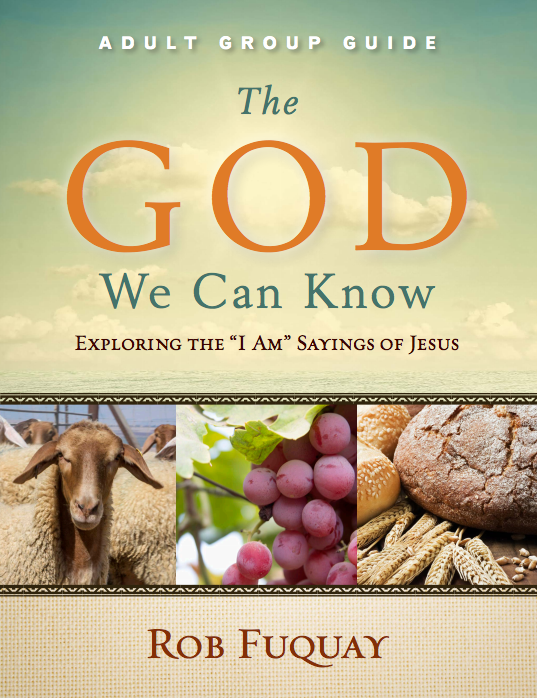 Adult Guide — this PDF is 42 total pages, you will want to download a copy to plan your adult study.
Adult Guide — this PDF is 42 total pages, you will want to download a copy to plan your adult study.
Planning
Tools to promote the series inside your church and out in your community!
Show the promotional video to your small group facilitators or teachers to help introduce the series as you begin planning.
If you like one and want to use it right click on it to download and use.
Flier — download a four color PDF for promoting your series (11 x 17)
Postcards — download this four color (one-sided) invitation card (8.5 x 5.5)
Church Banner — download this four color rotating gif image
Church Promotional on the PDF you will find some short announcements to tailor to your setting
I Am photo bar four color “I Am” images
Email Header four color logo
Logo includes logo on a white background (2999 x 1849 jpg)
Go and Do
Go and Do is a short list of ideas to help your small group consider ways to serve during your study of The God We Can Know. We hope you’ll explore new ways of serving that will continue even after your study ends!
I Am…Who are we?
Explore your church mission statement. Who are you as a community of faith? What is your church known for? Where might God be calling you to be in ministry with other community organizations, churches, and people? What community needs can you help serve and work alongside those already serving there? What resources will it take?
Bread and food
Plan a food drive for a local Food Pantry–this could become a regular way your community of faith gives in a tangible way. Invite a representative to share about their work and their monthly needs. Create a list of food needed and distribute it each month. Reusable grocery bags can be handed out after worship with the list of food needed. Ask those who collect coupons to share with those who will be purchasing food. Plan a day to not only deliver the food to the pantry but to help sort and stock the shelves. Encourage small groups to adopt your food pantry if they don’t already have a place they serve in your community.
Think about other ways to be involved. What groups in your church could be challenged to participate in ongoing ways?
Reach out to local bread companies, grocery stores, and restaurants to see if your church could schedule a pickup and delivery system to get unused food to those in need.
If you are United Methodist the link below is to UMCOR’s Hunger & Poverty projects around the world.
Light
Call your local utility companies and find out how you, your church or small group can pay utilities for those who are having difficulty paying their bill.
Purchase solar powered lights and phone chargers to share the gift of light, learn more by reading a blog written by Neelley Hicks and explore more ways to impact lives around the world.
What stopping places, rather than staying places are in your community? How might your group be involved or offer support? Think about groups that don’t already have relationships with communities of faith. Not sure where to start? Ask your mayor and City Council for recommendations.
Shepherding in your community
Make an ongoing commitment to help shepherd children or older adults in your neighborhood, brainstorm different ways to be involved. Here are a couple of church examples:
The Clubhouse is a non-profit partner with Ginghamsburg Student Ministry. Clubhouse prepares teens in grade 7-12 to provide free, faith-based programs to students in grade 2-6. Many of the teens who have volunteered have been former participants.
Perhaps your church would like to offer a series to learn more about orphan care, foster care, and adoption.
Write a personal note to someone who was or is a shepherd for you. Be specific in what they have meant to you and your spiritual formation.
Creation and Stewardship
Scope out your neighborhood or your church property for areas that can be converted into gardens to provide fresh food to your community and an opportunity for neighbors to meet. Open space or vacant lots can be converted as well–do research to secure permission to plant. Talk with community leaders if not veggies, why not ask for permission to plant wildflowers to add beauty?
Read more about community based agriculture here.
Maybe your next work trip could be to one of our National Parks!
Challenge those in your congregation to donate 10 inches of their hair to an organization that provides wigs for disadvantaged children and youth, Locks of Love.
Way, Truth and Life–Knowing God’s Way
Organize a prayer walk in your community, not just the neighborhood around your church. As you walk pause at each business and pray for the owners and customers. If the weather makes this difficult have teams ride in cars.
Research ways to support or become involved in ministry with prisoners like Disciple in prisons or supporting Kairos.
Resurrection and the Life–Knowing God’s Possibilities
Are there situations in the world that seem hopeless to you?
Below are links to stories of two people who felt called by God to do something as individuals that now have grown into ministries where others serve.
Brett Swayn—The Cookery, Lambscroft Ministries
Becca Stevens—Magdalene House and Thistle Farms
Think about people in your community who are serving in ministry because they refuse to see hopelessness and can only see possibilities. Write a note of encouragement and join them!
Consider and discuss where might God be calling you to a ministry of possibility?



